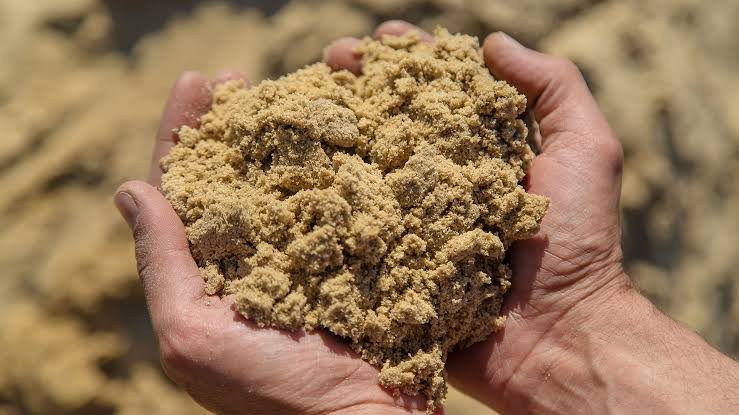Sand Battery is an example of a hot medium that uses sand or sand-like materials as the heat storage media. This device stores that energy in the sand, by heating it. Its primary purpose will be to work as a high-energy concentrated storage solution for excess wind and solar. The collected heat could then be used to supplement domestic heating or provide hot steam and high-temperature process heat for fossil fuel-dependent industries.

The transition to enhanced fractions of renewable electric energy generation is a changing global paradigm, however, its intermittent nature poses challenges for power networks. The sand battery comes as a transitional solution to play the role of enabling renewable energy to scale horizontally, in other words, generating infinitely increasing amounts of clean energy without interrupting usage due to too much supply.
The first pilot commercial sand battery in the world is located in Kankaanpää, Western Finland. This includes coordination with a district heating network that serves residential and commercial buildings throughout the community, including townhomes and the municipal swimming pool. Energy utility, Vatajankoski, in charge of the district heating network
The nomenclature “sand battery” was popularized through a BBC News story by Environmental Correspondent Matt McGrath, published on the 5th of July, 2024.
Frequently Asked Questions
What constitutes the structure of your heat storage?
Our heat storage comprises an insulated steel silo brimming with sand and heat transfer pipes. Ancillary equipment outside the storage includes automation components, valves, a fan, and either a heat exchanger or a steam generator.
How do you heat the sand?
We employ electricity from the grid or local production, harnessing variable sources such as wind and solar. Charging occurs when clean and affordable electricity is available. The electrical energy is converted to heat via a closed-loop air-pipe system. Electrical resistors heat the air, which is then circulated through the heat transfer pipes.
How hot does the sand get?
The peak temperature in the Kankaanpää heat storage approximates 600 degrees Celsius. However, the temperature can ascend further based on customer requirements. In practice, the upper-temperature limit is dictated not by the sand’s properties but by the heat resistance of the construction and control materials.
How is heat extracted from the storage?
Heat extraction involves channeling cool air through the pipes, which absorbs heat as it traverses the storage. This heated air can then be used to convert water into process steam or to heat district heating water via an air-to-water heat exchange.
Why choose sand?
Sand, and similar solid materials, can be heated to temperatures significantly surpassing the boiling point of water. Sand-based heat storage can retain multiple times the energy of an equivalently sized water tank, thanks to the broad temperature range sand accommodates. This attribute conserves space and affords versatile application across various industries.
What type of sand is utilized?
The heat storage’s efficacy is relatively insensitive to sand grain size. We favor dense, low-cost materials that are not sourced from scarce supplies. Materials unsuitable for construction often prove ideal for our heat storage medium.
Does the grain size of the sand matter?
Minimal. We tend to utilize grain sizes not viable for the construction industry.
How is the heat storage insulated?
Our heat storage is encased in steel and insulated with conventional, heat-resistant materials, ensconcing the storage between an outer and inner steel layer.
How long can the sand retain heat in winter?
The sand can remain heated for months if necessary. However, the typical application in Kankaanpää involves bi-weekly charging cycles. The heat storage achieves optimal performance when charged and discharged 20 to 200 times annually, contingent upon the specific application.
Is the exterior of the heat storage hot?
No, the outer surface remains cool as the heat is contained within the storage, as it should be.
Can it store electricity directly?
No, it stores energy as heat. This heat can be converted back to electricity using turbines, such as the ORC turbine or a steam turbine. However, this conversion requires additional investment in turbine technology and entails inherent energy losses, complicating the economic feasibility.
Is this technology new?
Yes and no. The concept of using heated sand for energy storage is not novel. What is innovative is our approach and its commercialization on a large scale.
Can I purchase your heat storage for my home?
Currently, we do not offer products for individual residential use.
Who are your clients?
We cater to a diverse array of businesses and industries, including energy utilities, residential and commercial building operators, and sectors like food and beverages, textiles and clothing, chemistry and pharmaceuticals, metal production, and pulp and paper industries.
Read More: The Future of Smart Speed Bump
Read More: High-Performance Concrete Build Business Case Value
